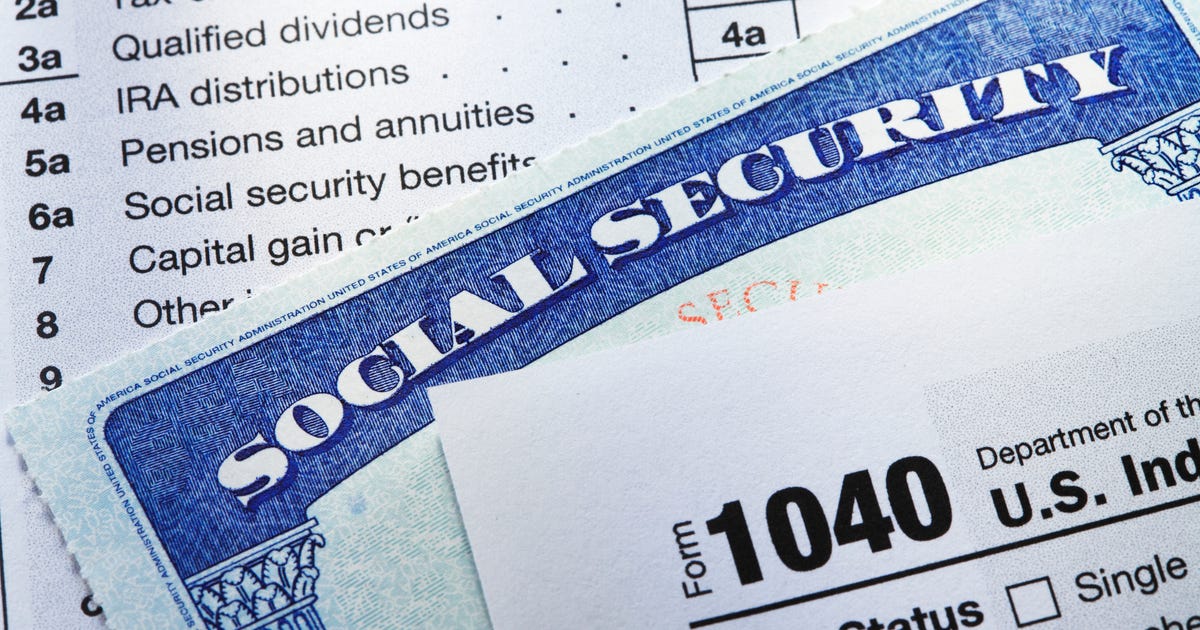This story is part of Taxes 2023, CNET’s coverage of the best tax software, tax tips and everything else you need to file your return and track your refund.
As tax season commences and the April 18 filing deadline starts to get closer, Social Security recipients might be wondering whether they should file a tax return this year. Whether it’s necessary for Social Security beneficiaries to actually file a tax return depends on a few factors.
Your age, your marital status and how much income you earn outside of Social Security benefits all have an impact on whether you need to submit a tax return to the IRS. And even if you aren’t required to file, it might be a good idea if you want to receive refundable tax credits or a refund for income taxes you paid during the year.
For more information on tax season, here’s an explanation of your Social Security Benefit Statement and the best tax software for filing your return in 2023.
I think my Social Security benefits are taxable. How can I know for sure?
Your Social Security benefits may be taxable if one-half of your Social Security benefits plus all of your other income is greater than the base amount of your filing status (the base amount for determining tax liability) which is:
- $25,000 for single filers, head of household, or a qualifying surviving spouse
- $25,000 for married people filing separately who lived apart from their spouse in 2022
- $32,000 for married couples filing jointly
- $0 for married people filing separately who lived with their spouse
Other forms of income include wages, self-employment, interest, dividends and other reported taxable income.
One way to understand whether your benefits are taxable is to consider gross income, your total earnings before taxes.
You will need to file a return for the 2022 tax year:
- If you are an unmarried senior at least 65 years old and your gross income is more than $14,700.
- If you are filing a joint return with a spouse who is also 65 or older and your gross income is more than $28,700.
- If you are filing a joint return with a spouse who is under 65 years old and your gross income is more than $27,300.
Another way to understand whether your Social Security benefits are taxable is to look at combined income, which is your adjusted gross income + nontaxable interest + half of your Social Security benefits.
- If you are a single tax filer and your combined income is between $25,000 and $34,000, the SSA says you may have to pay income tax on up to 50% of your benefits.
- If you are a single tax filer and your combined income is more than $34,000, you may have to pay income tax on up to 85% of your benefits.
- If you are filing a joint return and your combined income is between $32,000 and $44,000, you may have to pay income tax on up to 50% of your benefits.
- If you are filing a joint return and your combined income is more than $44,000, you may have to pay income tax on up to 85% of your benefits.
- If you are married filing separately and didn’t live with your spouse last year, your Social Security benefits are taxed as if you were a single filer.
- If you are married and filing separately while living with your spouse you probably will have to pay taxes on your benefits.
On line 6b of Form 1040 or Form 1040-SR, you will report the taxable portion of your Social Security benefits.
Should I still file my tax return even if I’m technically not required to?
The biggest reason to file a tax return even if you don’t have to is to receive a tax refund.
If you had federal tax income withheld from your pay or if you made estimated tax payments in 2022, you may want to file a tax return this year. You could receive a tax refund of any surplus withholding.
Another circumstance where filing is encouraged is if you qualify for tax credits that provide you with refunds, including the earned income tax credit, the child tax credit or the child and dependent care tax credit.
How can I check my benefit amount for 2022?
The Social Security Administration sends out a Social Security Benefit Statement by mail or online in January with your benefits from the previous year disclosed inside. The information in the statement provides you with the earnings you will disclose in your tax return if you end up filing one. For more information on the benefit statement, here’s an explanation of its role during tax season.
For more information on Social Security and tax season, here’s when you’ll receive your W-2 form for income taxes and why you should create an online IRS account prior to tax season’s arrival.

